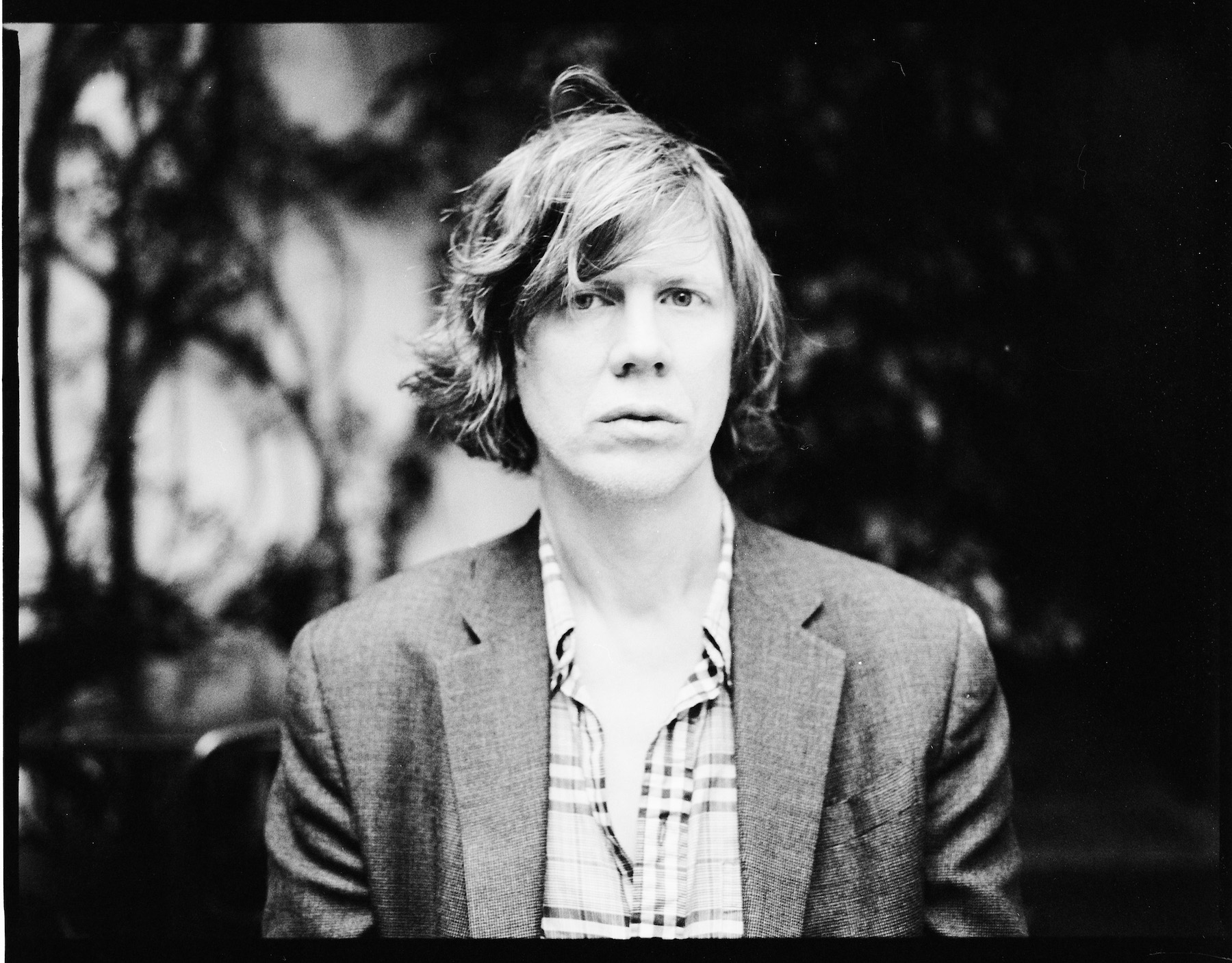
“I always feel like the success of a solo record is…as long as it really speaks to where you are in that place at that time, and without it being any kind of throwback or a return to form, whatever that may be,” says Thurston Moore, from his home in London.
Moore’s solo catalog is proof of that; an artist putting his timestamp at different periods of his almost 45-year music career—reflections of what was influencing him personally, professionally, and artistically.
More from Spin:
- Fontaines D.C. Leave Post-Punk Behind on the Exhilarating ‘Romance’
- Lee DeWyze’s ‘Gone For Days’ Is An Introspective Love Letter
- To the Moon Unit Zappa and Back
Even as a member of Sonic Youth, Moore was putting out solo records, his first in 1995 with Psychic Hearts. Since then, he’s released seven more. While writing music as part of a band, he notes, is a shared exercise, he loves the freedom of making music on his own—it’s less of a democracy and more of an opportunity to create his own music, the way he envisions it.
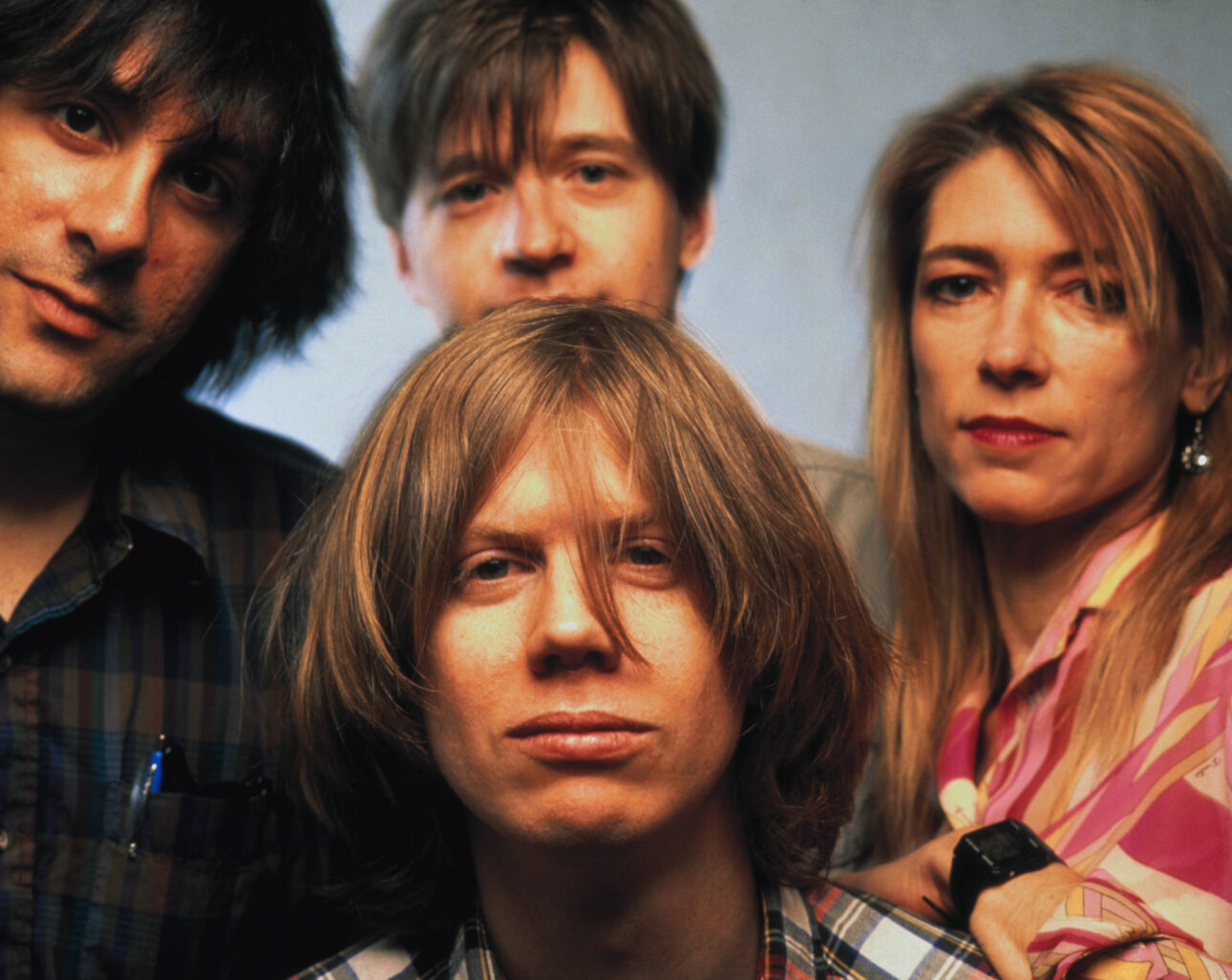
Since Moore moved to London in 2012 to live with his then-partner/now-wife, Eva Prinz, he seems to have the best of both worlds—the creative freedom of a solo artist combined with a collaborative partnership, the way some of his musical heroes have done. Prinz, who now goes by Moore, has contributed both song lyrics and album design to Moore’s solo albums.
“It’s really wonderful having somebody who has a voice such as Eva’s—pseudonymously as Radieux, Radio—on the records,” he says. “It’s like having that member of the band, the way Robert Hunter was in the Grateful Dead or Pete Brown, the writer of lyrics for Cream, or something like this; even like Patti Smith writing lyrics for Blue Oyster Cult. And, I always liked that when I would get a Blue Oyster Cult record in the early ‘70s, and I would see these bylines by Helen Wheels or Richard Meltzer or Patti Smith as a lyricist…they would write this music and they would get other writers, friends, and lovers to compose lyrics for them. And something about that I always found really fascinating and appealing. And I like having that collaboration in my solo records, particularly the ones I’ve been making since being in a relationship with Eva.”
Over three decades, Sonic Youth released 15 studio albums, their last being 2009’s The Eternal. Moore, ever the music academic, continued to pursue his own musical interests: recording, performing, and experimenting with sound with his band, the Thurston Moore Group. Together with his wife, Moore founded the Daydream Library Series record label in 2018, featuring emerging artists from all over the world.
Now, he’s about to release his ninth solo album, Flow Critical Lucidity, set for release on September 20. The album’s most-recent single, “The Diver,” is based on the true story of a diver who drowned in Lake Geneva. The incident happened while Moore was composing the songs that would encapsulate this record.
I sat down with Moore to explore the making of—and enduring legacy of—his solo career.
Flow Critical Lucidity (2024) – Daydream Library Series
Thurston Moore: [This is] a record that was written while at a musical residency around Lake Geneva in Switzerland. There’s an enclave there that allows artists and musicians to hide away and write, which is a very European thing. Eva, my wife, wrote most of the lyrics on the record; at least five out of the seven songs. And so the title of this record comes from the lyrics to one of her songs on the record. It’s distinctive from the previous solo records just in the fact that I utilized more instrumentation than typical. And by typical, I mean guitar, bass, drums, you know…vocals.
So there are just different types of percussion on this record. James S. Edwards—who’s a remarkable guitarist—is also a remarkable multi-instrumentalist. And so I had him play some piano and other keyboards on the record. And that really opened it up. And also having an “electronics musician” come into the band the last few years—a gentleman named Jon Leidecker, who records under the subriquet “Wobbly.” He’s a remarkable electronics musical genius from the Pacific Northwest. He’s a member of Negativland…and I met him in London in the context of doing some John Cage music at a venue here. And I thought he was just an esoteric academic, but he was also somebody who knew every single note of every single Sonic Youth record, as well as every single note of every single Beatles record, as well as every single note of any pop record. So we became instantly connected. And so I always like having him in the band.
This new record deals a lot with contemporary thinking about what’s going on with the planet. And it’s a very climate-conscious repartee happening on this record without it being preachy. There’s some evocative ambiguity going on through it as well. But it’s kind of like my favorite solo record that I’ve made as a solo recording artist coming out of Sonic Youth—let’s put it that way.
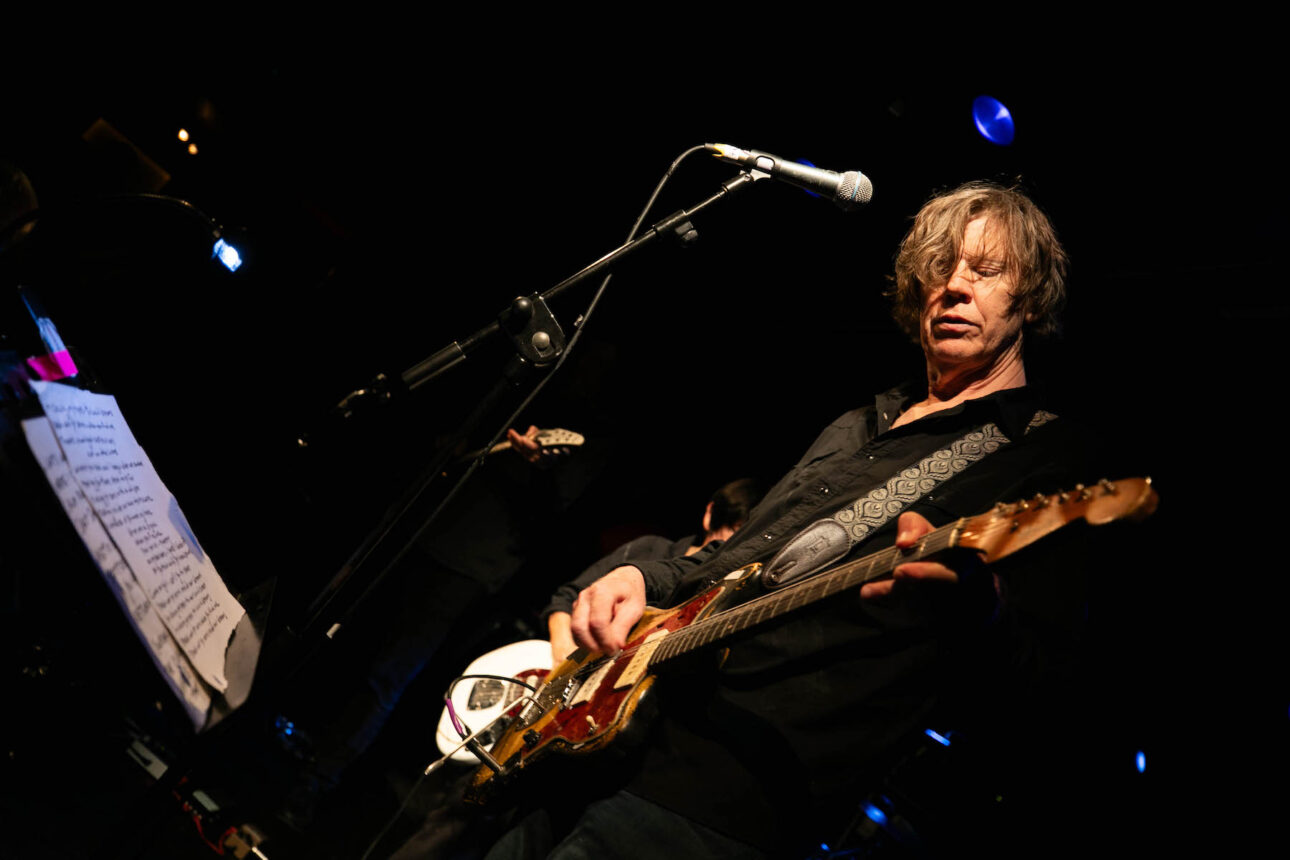
Psychic Hearts (1995) – Geffen Records
Psychic Hearts was written while Sonic Youth was still extant. I recall wanting to do that record because I just wanted to write some solo music outside of the band where I didn’t have to be dealing with any other permissions to create the music. And not that there was any issue with that within Sonic Youth. I didn’t put it out with any agenda that I was going to have some kind of solo career or anything. It was really sort of in the context of Sonic Youth coexisting. But it got a lot of attention to the fact that some of those songs were being played more on college radio than Sonic Youth was. And so that was a little exciting in a way.
But I think it was predicated upon doing a tour of Japan, where I played solo along with Free Kitten—a trio of Kim [Gordon], Julia Cafritz from Pussy Galore, and Yoshimi from the Boredoms. And so I went along, basically just as somebody who would take care of the luggage. And I wrote a bunch of solo songs to perform on this little tiny club tour. And I had different people join me on stage from Japan to play some improvised free-noise music, like Keiji Haino and Yamantaka Eye from the Boredoms, and a few other people.
I was writing a lot of those songs burning through the days of Lollapalooza ‘94. A lot of it was what was in the air at that time. It was just a few years after Kurt had died and Courtney was sort of in this space that we were in. And so I was hanging out with Courtney a lot and just…being at this age where our lives were radically changed since the late ‘80s, very quickly and very loudly. And so a lot of that kind of energy at that time was put into that record.
I recorded this whole record at Sear Sound where Sonic Youth had been recording at that time. And I really wanted to use the cover art of Rita Ackermann, who was a dear friend. And she had this painting that was on the glass facade of the New Museum on Lower Broadway in New York City that was ultimately destroyed because they couldn’t keep it. And so I took photographs of it. And that was the cover art. And I kind of really just wanted the records to exist so that the cover art would exist.
Trees Outside the Academy (2007) – Ecstatic Peace!
So, Trees Outside the Academy was recorded right when Kim and I moved to North Hampton, Massachusetts, which would’ve been very late ’90s. I remember welcoming in the year 2000 with a large group of people in our new house. It was the first time we had a “house” in any kind of domestic way…and a car. And all of a sudden we were suburban, or somewhat rural. But North Hampton is a really vibrant college town in Western Massachusetts. And we lived within spitting distance of the all-women’s college, Smith College. So I used to traipse through the trails behind Smith College along the river there, particularly when I was walking our dog, Merzbow. And I started to write some songs again, at the same time as constructing music with Sonic Youth.
I decided to record a solo record that was more based on my interest in playing acoustic guitar at that time, which I hadn’t really done too much of up until then, all through the ‘80s and into the early ‘90s. By the late ‘90s, I had gotten more interested in what I could do with an acoustic guitar—a six-string and 12-string. And so a lot of the songs had their genesis on an acoustic guitar and using different tunings and such, and staying away from any kind of outboard kind of machinations—fuzz boxes and different pedals like that. And I had Steve Shelley play on the record. I played most of the guitar and bass, and I recorded it on the uppermost floor of J Mascis’ house in Amherst, Massachusetts, which is right next door. He lives in this big, beautiful purple house, [which] used to belong to the Thurman family: Robert Thurman, the Buddhist scholar, and his daughter Uma, who was in J’s high school previously. And so that top floor supposedly is where the Dalai Lama would sleep when he would come to town and be a house guest of the Thurmans. And so, that’s where he set up his little home recording situation up there. And he has some great gear up there. He probably still does.
Demolished Thoughts (2011) – Matador Records
Demolished Thoughts was a line that came from a hardcore song by the Faith, which was a D.C. hardcore band from the early ‘80s. The singer was Alec MacKaye, who was the younger brother of Ian MacKaye of Minor Threat and later Fugazi. And there was one song of theirs on the split LP they did with a band called Void. And I thought Alec MacKaye’s lyrics were fantastic on that record. And there was one lyric that said, “Demolished thoughts falling from my mind…” or something like this. And I was like, “demolished thoughts!” It was such a weird, violent juxtaposition with the idea of thought, which is a very sort of ethereal idea. Demolished thoughts… there was an awkward grace to it that I really liked. So I decided to use that as a title. But it was all about just being in service to that title. And Steven Parrino, who did the cover, was also an artist that I really thought did great work—a downtown New York City artist who’s no longer with us.
So yeah, this was a heavy record. It was recorded at Beck’s home studio in Malibu. And it was a record I was writing when my life was really changing. Kim and I were going through a separation just then. And so a lot of the nature of that record is dealing with that time period. A lot of what’s running through that record is this very fractious period in my life.
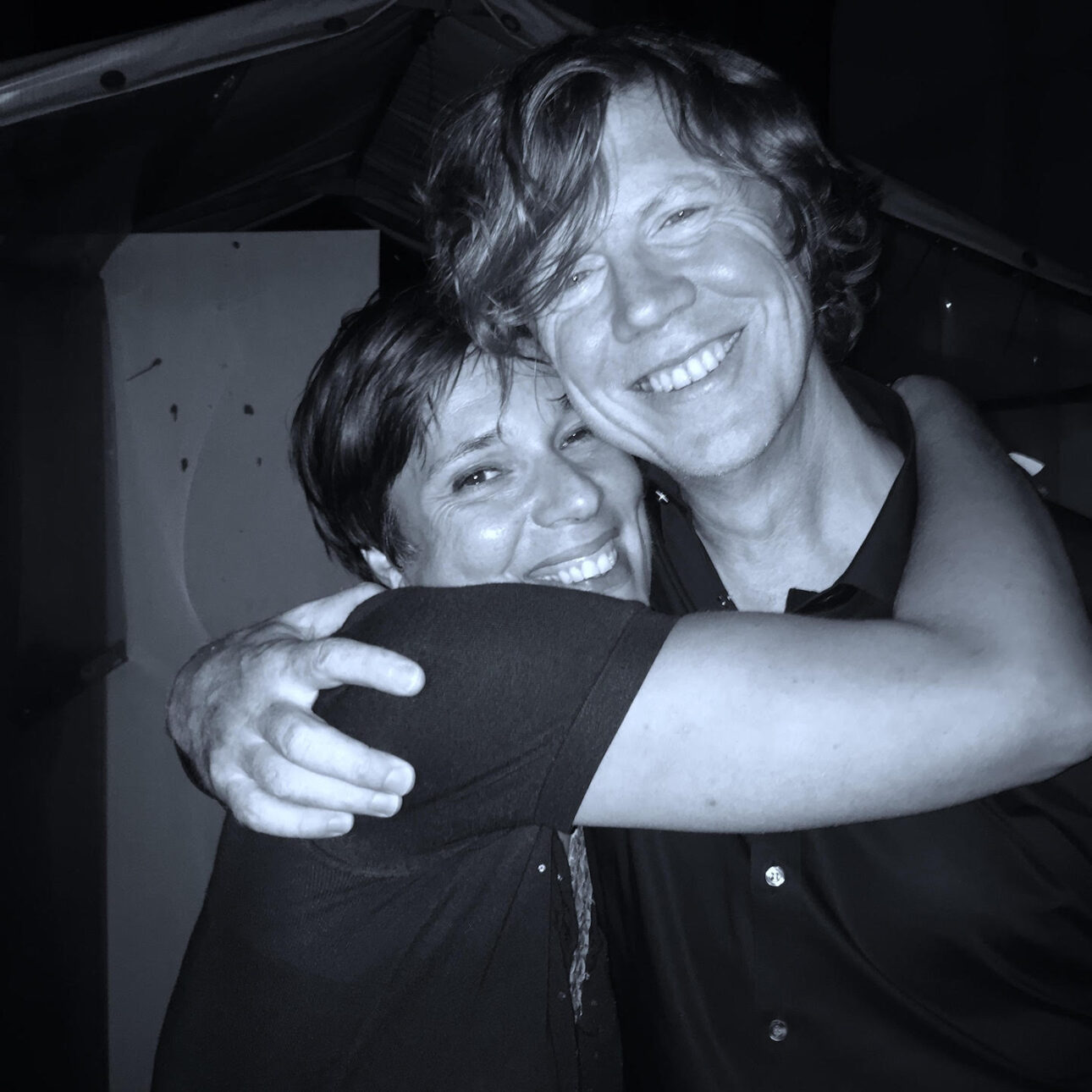
The Best Day (2014) – Matador Records
The Best Day was the first record I did when I relocated to London. Eva and I found a place here, and one of the people living in our building was a guitar player who I kept listening to and thinking was fantastic. He didn’t know I was in the building. And then he was a Sonic Youth fan. And so when he saw me in the common kitchen area, he dropped his tea on the floor, and I asked him to join my band. I played him all these new songs that I had been writing. And the two of us did some gigs. We opened up for Lee Ranaldo when he came over to London, and just played instrumentally. And then he introduced me to the idea of having Deb Googe from My Bloody Valentine, who I hadn’t seen since the ‘80s when Sonic Youth and My Bloody Valentine used to play together, play bass. And she readily joined the band.
We went through different drummers. Steve Shelley played drums for a while. He plays on The Best Day. Eventually, I would get a London-based drummer as opposed to flying Steve over from Hoboken every time I needed to practice a song. So The Best Day was that first London record with my London group. And I put a photograph of my mother and father from the 1940s when they were falling in love. And so hence the title of The Best Day.

Rock and Roll Consciousness (2017) – Fiction
The Best Day was the last record I did with Matador. Sonic Youth already had a previous history with Matador on our last couple of records. They did The Eternal, the last Sonic Youth Record. But I wanted to have a label that was more based here in the U.K. And so I begged out of my contract with Matador, and they were very okay letting me go, as it were. And I went to this label called Fiction, which was a label that was started to support the Cure. It was Robert Smith’s label. So I got a one-off deal with Fiction Records to put out this record Rock and Roll Consciousness. And it was a bit of a high-profile record label, and I wanted to have a high-profile production on this record. I went to this studio here in London called The Church. The chief engineer there was Paul Epworth, and he had made his name as the recording engineer and producer of Adele’s records. And he had all this great gear there. He had two 24-rack boards; one belonged to the Beatles and one belonged to Pink Floyd or something like that.
It was a really interesting room where you would play and there was no sound division between you and the engineers at the desk. And so they would all wear headphones while you were playing, and they would listen…and it was pretty unorthodox. It was an incredible-sounding room, an incredible place to record. And it was really lovely to make a record there. And that was the first really proper record where James Sedwards, the guitar player; Deb Googe, Steve Shelley, and I really got into being a band. And then I asked Randall Dunn—who I had known from his mixing with bands like Sunn O))) and Earth and these kinds of heavier, more bestial-sounding, big music drone bands that I liked—to mix the record. I was curious what that would be like to have somebody who had that aesthetic mix this record. And the record had a big sound going for it already. So I went to Seattle and worked with Randall Dunn in the studio in Seattle, which was really rewarding.
And on the very last day, as we finished the very last note, I got in the car to have some kind of minor celebration of finishing. And the first thing I heard was that David Bowie had just died. I always remember that. So that was that record. And then the cover was a photograph by this Portuguese photographer named Vera Marmelo.
Spirit Counsel (2019) – Daydream Library Series
So Spirit Counsel was a departure record. It was a series of instrumental recordings that I had been working on, and I wanted to step away from the band a bit and just sort of entertain the notion of doing really long-form musical pieces that lasted for an entire set of music—whether it be an hour or an hour and a half—that would go through a system of changes, but still retain the aspect of a composition, with all the logic of what composition can be. And so that led me into creating this piece “Alice Moki Jayne,” which I could only release on CD because it was such a long piece. I recorded it here in London with Deb Googe and James Sedwards from my group and a few other guitar players. I decided to release it as a single CD.
But in the interim, I had also recorded a couple of other instrumental pieces. And one was called “8 Spring Street,” which was a tribute to Glenn Branca, who I had played with in the very early ‘80s, and I had first come overseas with. He had resided at 8 Spring Street in New York City, and he had passed away. I wanted to write a song that was an homage to Glenn. To flush out the release, I had done a musical presentation at The Barbican Centre, which was a performance space, a museum, a gallery space of some renown here in London. And they invited me to present something one night. And I decided to create an evening of music with 12 12-string guitars. And so one half of the concert was a piece of music for 12 12-string acoustic guitars, and the second half was for 12 12-string electric guitars.
And I recorded the piece and the tapes got ruined. They vanished in the digital realm, where digital media will vanish sometimes, never to be found again. And so all I had was an ambient recording of it. And the electric piece “Galaxies”was the one I used for this release. So it was three CDs of expansive guitar music, all instrumental, put into a box, and it was one of the first things they released under my name through the Imprint Daydream Library series, which was Eva’s and my imprint, which continues to this day.
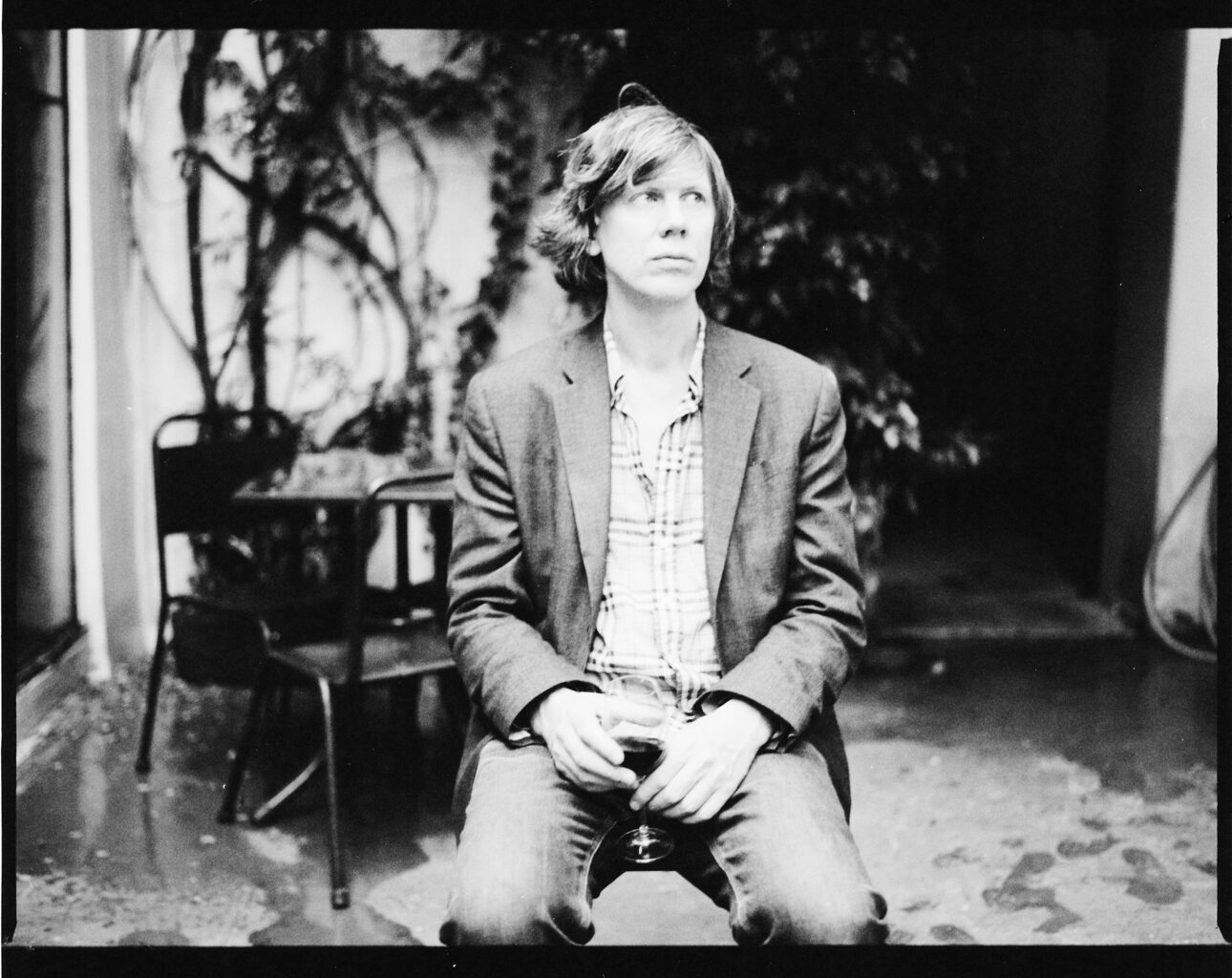
By the Fire (2020) – Daydream Library Series
By the Fire was a return to the classic song-based record, which I was being asked about after spending a year and a half doing all this instrumental guitar music. It’s like, “When are you going to do another record of songs?” And I was like, “In my time, I will.” And I did. And By the Fire was what that record was. And again, it was Deb Googe and James Sedwards, and this time bringing in the electronics musician, Jon Leidecker. The percussion was shared by Steve Shelley and Jem Doulton, who would soon after become my primary drummer as he is, right now to this day.
So that’s who my core group is right now. And it begins with By the Fire. It was a double album, and it was recorded at Total Refreshment Centre, which is a studio in London that is a really wonderful, funky spot. It does a lot of reggae, a lot of hip-hop, a lot of new, smart, jazz music. I loved the place, and I used to hang out there. And we recorded that there. And I used these photographs that this Belgian photographer Nico Bruggemans had taken of the band playing live in Brussels. So that record was straight-up getting back into writing post-Sonic, sonic songs. That’s what it was. “Hashish,” “Cantaloupe”…one song on that record called “Breath,” was the only holdover from being recorded some years prior. It was part of The Best Day session, but I held onto it and put it on this record.
Screen Time (2021) – Southern Lord Records
Screen Time is…if there’s an outlier in my solo work, it would be that record. It was recorded primarily as a series of instrumental pieces with the idea that it was like a soundtrack to a film that was never made, but it was one that I was imagining. So each track is called “The Station,” “The Town,” “The Home,” “The View,” as if you’re sort of moving through these different scenarios in a film. It was just evocative.
I had initially put it up as a digital-only album on Bandcamp. And I got an email from the fine people at Southern Lord Records in California asking if they could do vinyl. And I said, “Yes, of course!” So I felt honored. I loved Southern Lord. I thought they were a great label. And I thought they were a label that actually put out all this kind of really heavy drone music… and my record was none of those characteristics. It was a more…instrumental record that was done in one day and just sort of thrown up on Bandcamp, as it were.
I took a photograph of this sculpture that was embedded in a university building outside of Chicago and Evanston. I went there to see the archives of Glenn Branca again…and they had all of his guitars and his scores there. And as I was leaving, I saw that sculpture embedded into the library, and I took a picture and I used that for the cover. And the fact that the record had something to do with my imagining of what a film soundtrack would be, I called it Screen Time. And it was a bit of a double entendre, alluding to the contemporary malaise of people constantly staring at screens and [also] this kind of prohibition against screen time for parents and their children and such.
I got so much feedback from that record, from people saying, “That’s my favorite record of yours.” And I was like, “Well, it’s not really a real record. It was just some kind of loosey-goosey thing I threw up.” But I understand. I love the appeal of immediacy in music, and that’s what that record was. It wasn’t a record that was belabored at all in the studio. It was me with headphones on in front of a Zoom recorder, plugging in different guitars and just sort of mixing on the spot. So it certainly has a vibe where it’s a very, in-the-moment, expedient record. It’s probably my most accessible record, and it was the only record that we didn’t release through our own imprint. It was just sort of like we gave it away. But I like the fact that it actually generated some response…mostly positive. I’m very proud of it.
To see our running list of the top 100 greatest rock stars of all time, click here.


